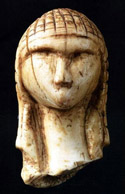Anthropology, Department of

Department of Anthropology: Faculty Publications
Document Type
Article
Date of this Version
2004
Abstract
In January of 2001 the Department of Anthropology and the Department of Geography became the Department of Anthropology and Geography. This merger was not requested by members of either unit: it was imposed administratively. Under ideal circumstance, such mergers evolve organically through a history of collaborations from the bottom up. Nevertheless, faculty of each unit had collaborated in a variety of contexts so there was some basis for integration. As one may imagine, one of the first things we set out to accomplish as a newly formed unit was the establishment of a common set of by-laws. After about six months of joint meetings we created our by-laws which represented a first crucial step in integrating the department. The administrative and committee structures are fully integrated even though the department functions as two separate curricular programs. The next significant step in our history came in the summer of 2002 when the Geography Program faculty moved out of Avery Hall and physically merged into Bessey Hall and Morrill Hall space occupied by faculty of the Anthropology Program. Prior to our physical merger, we had the option of the Geography Program occupying space in Nebraska Hall. Faculty in both programs strongly felt that such a move would hinder our ability to grow together as a cohesive department even though a physical merger would place great hardships on us all by sharing such a small space. The archaeologists were especially inconvenienced by the loss of teaching and research laboratory space. Nevertheless, we believe we made the correct choice. In August of 2002 Dave Wishart became chair of the department. Patricia Draper had been chair at the inception of the merger and there was reasonable concern that the numerically dominant anthropologists would hold administrative sway in the department. Wishart's election put that fear to rest. Since the move and election of Wishart as chair we have met on numerous occasions to discuss department integration programmatically. Out of these discussions came the Indigenous Peoples specialization in the Geography doctoral program which was approved by the Graduate College in November of 2003. This new doctoral program will permit graduate students to pursue a doctoral degree in the Geography Program in an area, indigenous peoples, in which faculty in both programs have interest and expertise. There is discussion of another track in the Geography doctoral program that would emphasize archaeology, GIS, and cartography. It should be noted that these programmatic mergers, to some extent, were driven by a long history of anthropology faculty serving on geography doctoral committees of students who had research topics that bridged our two disciplines. Finally, we are searching for ways to develop a shared undergraduate minor in regional or area studies. Our merger as a cohesive unit has been accomplished successfully. We are proceeding deliberately to simultaneously maintain the integrity of our disciplines while taking advantage of interdisciplinary opportunities that benefit us and our students.
Includes Faculty vitae, Course descriptions, Review of Existing Instructional Programs, proposal for a Specialization in Professional Archaeology at the MA level, Review Team Report: (May 1997), Self-Study Report to the Academic Planning Committee Geography Program, supplementary materials.

